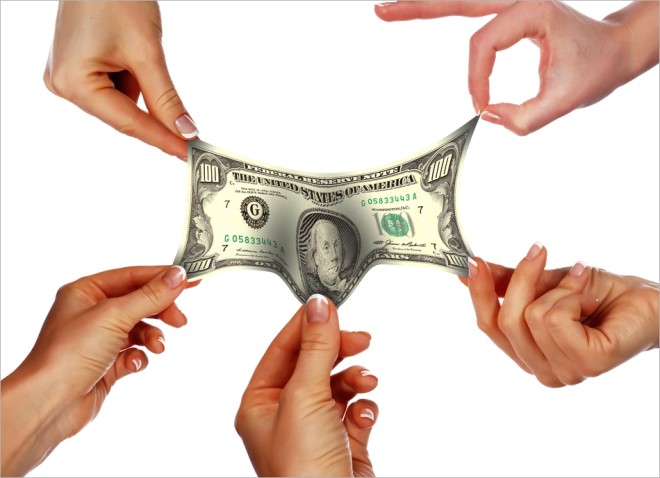Price Elasticity

Concept
The concept of price elasticity is pretty easy to grasp.
In economics, it is a measure of how sensitive demand or supply is to price.
In marketing, it is how sensitive consumers are to a change in price of a product.
There are many determinant of elasticity that are both supply-side and demand-side. Nevertheless we can distinguish two types of price elasticity:
Own price elasticity: changes in demand of a single product due to its price
Cross price elasticity: with changes in demand of one product due to changes in price of another.
Understanding elasticity allows us to identify the optimal point for revenue – since we have reducing marginal returns on price increments. Graphically the optimal point lies at the frontier of the Price vs. Quantity graph depicted below:
Own Price Elasticity

Imagine you were going to buy an apple from the local market where there are only 100 apples and 100 customers including yourself. The price of apples on the day is $2 and every person can only buy 1 apple.
At a price of $2 perhaps 80 people would be willing and able to buy an apple at the $2. If the price of an apple suddenly became $100 per apple, chances are no one would be willing and/or able to buy an apple. At a price lower than $2 we might see a few more people buying apples, or none at all.
The same dynamic applies to quantities where a drop or rise in the availability of apples would impact how much people are able and willing to pay for a product.
We therefore arrive at the formula for price elasticity of demand is given by either of the following:
- PE = (ΔQ/Q) / (ΔP/P)
- PE = (ΔQ/ΔP) * (P/Q)
- P is price
- Q is quantity
- ΔQ is the change in quantity
- ΔP is the change in price
Let us look at an example.
Imagine you are a sales person in the market and you sell apples .. green shiny ones that makes people’s mouths water with delight. You currently sell like everyone else in the market an apple for $2 and sell 100 apples each day.
You want to sell more and therefore you decide to play the price game (…bad idea, but that’s for another post…) and cut the price to $1.99 (…nice move, sales person, nice move…). The next day rolls over and you end up selling 110 apples.
How elastic is demand?
It’s 20 … but what does that mean?
It means for every percentage drop in price, you get 20 percent increase in quantity.
Elasticity Interpretation
Generally, we can interpret price elasticity values with the following ranges:
- PE equal to 0: Perfectly inelastic demand – meaning that price has no impact on quantity.
- PE between -1 and 1: Relatively inelastic demand
- PE larger than 1: Changes in price impact demand in opposite direction.
- PE less than -1: Changes in price impact demand in the same direction.
Cross Price Elasticity

Imagine you grew your business and now own an entire supermarket.
You now sell apples, juice, eggs, flour, cookies and all sorts of great products!
You start thinking about the pricing strategy of your products and you set prices for each product. You notice that changing the price of eggs impacts sales (as it should do!). You start to do the elasticity calculations and you realize that increasing the price of flour reduces sales not only in flour, but also in eggs. Another oddity is that eggs sales pick up slightly when you increase the price of cookies.
Soon you realise that the changes you make in the price of flour impact that changes in quantities sold of eggs. Likewise, the increase in price of cookies impacts the sales of eggs. People start making their own cookies rather than buying them ready made if they are too expensive!
This is called cross price elasticity and is calculated as follows:
- CPEeggs,cookies = (%ΔQeggs / %ΔPcookies)
We calculate %ΔQ and %ΔP as follows:
- %ΔQ = Qstart – Qend / (Qstart + Qend) ÷ 2
- %ΔP = Pstart – Pend / (Pstart + Pend) ÷ 2
Lets take a look at an example. Suppose that you had cookies priced at $5 and eggs at $2 selling 100 units and 50 units respectively. You decided to increase the price of cookies because they are awesome and stuff to $8! Your customers are angry cookie monsters and you only manage to sell 10 cookies after the price hike. On the other hand, your egg sales fly through the roof at 100 units. It seems like many cookie monsters decided to bake at home.
We would then get CPEeggs,cookies = %ΔQeggs / %ΔPcookies = (~33%) / (~23%)
This gives a CPE of 1.44 … but what does this mean?
The positive relationship between eggs and cookies indicate that they are good substitutes for one another. That a change in price of eggs by one percent increases the sales of cookies by 1.44. If the relationship was negative, they would be complements to one another.
Next Steps
We now know that elasticity tells us about how sensitive our customers are to the price of one product or the relative price of another. We can use this information provided historical data, but as the adage goes: hindsight is 20-20.
The next step would be to be able to predict or model the relationship between quantity and price and determine elasticity. This should start to sound familiar if you have had any experience with regression modelling. A regression model would take the form of:
- Quantityeggs = A x Priceeggs + B x Pricecookies + e
Where A and B are some coefficient and e is a constant.
We would then have the predicted relationship between quantity and the price of each product in our supermarket. Calculating price elasticity and cross price elasticity then becomes relatively easy.
This is precisely what we will do with R in the next post on Price Elasticity with R!



Pingback: Price Elasticity with R : Salem Marafi
Should this
%ΔQ = Qstart – Qend / (Qstart + Qend) ÷ 2
be this?
%ΔQ = (Qstart – Qend) / (Qstart + Qend) ÷ 2
Pingback: Weekly Blog – Topic 6 Digital Markets | jlo photography
for first example price elasticity value is 20.
Q1 ) how does it fit in below interpretation
PE equal to 0: Perfectly inelastic demand – meaning that price has no impact on quantity.
PE between -1 and 1: Relatively inelastic demand
PE larger than 1: Changes in price impact demand in opposite direction.
PE less than -1: Changes in price impact demand in the same direction.
Q2) how to we calculate the price elasticity from the regression model ?
( where y is price variable and X is quantity variable)